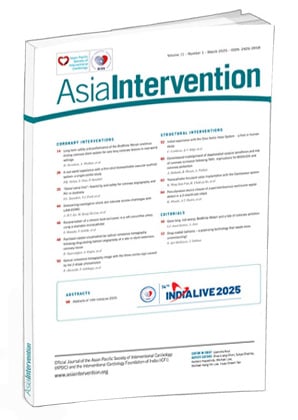Diffuse coronary lesions and tapering coronary arteries are commonly encountered in clinical practice. In this context, many physicians prefer to use multiple overlapping stents, with 2 or even 3 devices, instead of a single long stent due to mismatches in the proximal and distal vessel diameters. However, overlapping stents were reported to have longer fluoroscopy and procedural times as well as higher rates of cardiac mortality and target lesion revascularisation (TLR) at follow-up1. BioMime Morph (Meril Life Sciences) is a tapering coronary stent with a unique hybrid stent design, combining closed cells at both the distal ends and open cells in the centre, which allows it to sufficiently conform to the vessel vasculature, resulting in improved stent apposition. Ambitious research has been undertaken in the past years aiming to demonstrate if a single tapering stent strategy reduces not only the radiation exposure of the operator but also the risk of restenosis compared to overlapping stents, based on the hypothesis that the latter leads to higher vascular injury, delayed healing, a greater rate of very late stent thrombosis, and vessel aneurysm formation. The early and 1-year outcomes of the BioMime Morph sirolimus-eluting stent (SES) previously reported major adverse cardiac event rates of 0-4.7% at 1 year234. In another study by Amirzadegan et al5, it was reported that for long lesions, BioMime ultralong stents may have comparable results to other well-established brands of coronary stents (PROMUS [Boston Scientific]/Resolute [Medtronic]/XIENCE [Abbott]).
In this issue of AsiaIntervention, The Morph India study by Davidson et al6 provides safety and efficacy data for the BioMime Morph SES in treating very long (length >26 mm to ≤56 mm) coronary lesions in native coronary arteries with a reference vessel diameter of 2.25 mm to 3.50 mm up to 3 years. BioMime Morph was reported to have low rates of all-cause mortality, stent thrombosis and revascularisation events at 3 years. Similar findings were observed in the subset with patients implanted with 50 mm and 60 mm stents. In this study, a moderate level of late lumen loss was reported, both in the stented segment and in the diseased coronary segment, and significant improvements were observed in the in-device minimal lumen diameter at the postprocedural and the 9-month angiographic follow-ups using quantitative coronary angiography in the study population.
The inclusion of a moderately complex patient group adds to the strength of the study. The study included angiographic follow-up; however, use of intravascular imaging (to assess malapposition, underexpansion, stent thrombosis or restenosis) or physiological assessment could have helped better understand the outcomes of this novel stent. Beyond the optimal reported outcomes, it is imperative to acknowledge the broader clinical context and potential challenges associated with the widespread adoption of this novel stent. First, the use of long stents might necessitate additional plaque preparation and the use of techniques or devices to increase support and facilitate stent crossability and expansion without causing any damage. Second, questions linger regarding longer-term durability when a long segment is stented. Finally, current research is focused on the “leave nothing behind” concept where the use of drug-coated balloons (DCBs), alone or in combination with shorter stents, might challenge the use of long stents in diffuse coronary disease.
In conclusion, the study by Davidson et al offers important insights into the 3-year outcomes with the novel BioMime Morph tapering stent. However, it also highlights remaining questions that require further investigation. Moving forward, prospective, long-term studies with larger sample sizes and the incorporation of intravascular imaging, as well as direct comparisons with DCBs, are warranted to elucidate the safest and most durable strategy to improve the outcomes of patients with long coronary lesions.
Conflict of interest statement
I.J. Amat-Santos is proctor for Meril Life Sciences. A. Jain has no conflicts of interest to declare.

